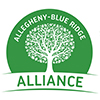The risk of failure for the Atlantic Coast Pipeline (ACP) to safely cross the Appalachian National Scenic Trail (ANST) and the Blue Ridge Parkway (BRP) is “substantial,” according to comments filed February 7 by the Dominion Pipeline Monitoring Coalition (DPMC). DPMC’s filing with the Federal Energy Regulatory Commission (FERC) is in response to FERC’s Draft Environmental Impact Statement (DEIS) for the ACP. Plans previously filed with FERC by Dominion Transportation, Inc. (DTI) call for use of horizontal directional drilling (HDD) and contingency use of direct pipe installation (DPI) if the HDD operation fails. The U.S. Forest Service has stipulated that any permit for ACP construction on National Forest lands will be conditioned on prior successful completion of the Blue Ridge HDD or DPI operations. The Forest Service has not yet acted on a pending permit application for the ACP.
Among points made in the DPMC comments are:
- The extensive earth disturbance on steep slopes that will be required for the proposed Blue Ridge HDD and DPI operations was not addressed in the DEIS. The area and amount of excavation required for construction of level entry- and exit-side workspaces are imprecisely specified as “proposed” and “to be determined by contractor.”
- The DEIS includes a Dominion claim that subsurface borings confirm expectations that the HDD drill path will be primarily through non-problematic solid rock. This claim, however, is contradicted by geophysical studies reported in previous Dominion submissions to FERC.
- FERC has not been responsive to comments seeking scientifically objective evidence that its generic requirements are sufficient to prevent water resource impacts during and after pipeline construction in the central Appalachian region.
- Should the HDD and DPI prove impracticable after ACP construction is underway and options for alternative routing are foreclosed, there will be an incentive for allowing an open-cut crossing of the ANST and the BRP.
- A revised DEIS is necessary to meet the information needs of multiple stakeholders, including the general public, the regulatory agencies, Dominion partners and investors, and affected property owners.

